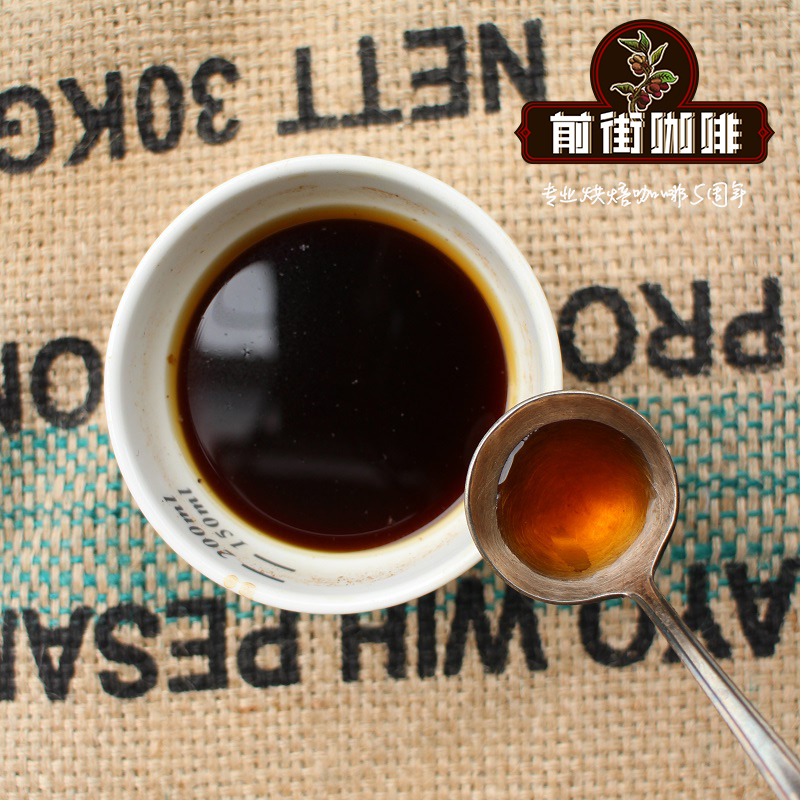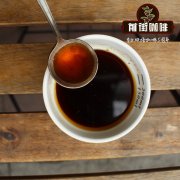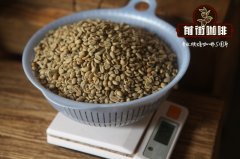What is Brazilian Santos coffee? What are the characteristics of Brazilian coffee? How do you drink Brazilian coffee?

Professional coffee knowledge exchange more coffee bean information please follow the coffee workshop (Wechat official account cafe_style)
Brazil is the largest coffee producer in the world, accounting for about 33% of coffee production, but because Brazil is located in tropical rain forest areas with relatively flat terrain and few high-altitude mountain forests, most coffee is grown in low-altitude non-volcanic soil areas. And there is not much shade for shading, resulting in the disadvantage that Brazilian beans grow too fast, but the shape of beans is very large, but the density and soft flavor of coffee does not change much. Coupled with the large-scale machine harvesting of coffee beans with a wide range of maturity differences in coffee harvesting at the same time, the quality of Brazilian beans is not particularly suddenly used in the category of commercial or Dazong beans.
Brazil is the world's largest coffee producer and exporter, accounting for about half of all world production, while Brazilian Santos coffee is the representative of Brazilian coffee. "Santos" comes from the name of the port where coffee is shipped. The best quality coffee grown in the valley around the state of Sao Paulo is concentrated in the port of Santos, which represents the brand of high-quality coffee in Brazil.
Meticulous aroma, comfortable and mild flavor, suitable for those who are new to coffee to try to drink. Her taste is neutral, fragrant, no irritating sour taste, smooth, slightly bitter, is afraid of sour taste of your best choice, do not need to add sugar to drink a touch of sweetness, and with a little creamy aroma, smooth taste after the entrance is not bitter, extremely smooth and smooth.
For Brazilian Santos coffee, there are no outstanding advantages, but there are no obvious shortcomings, adhere to the golden mean. This coffee has a mild and smooth taste, low acidity, moderate mellow and a hint of sweetness. These flavors are mixed together, and if you want to distinguish them one by one, it is the best test for the taste buds, which is why many Brazilian Santos fans love this kind of coffee.
Among the Brazilian coffee, Santos coffee is the most valued and famous one. It is like a friend who is low-key in appearance, indifferent in appearance, passionate in heart and full of wisdom. It may not bring you a strong feeling, but it seems to be by your side when you need it.
Soft but intense aromas, chocolate palate, marked vanilla sweetness, balanced acidity and thick Body, with a lingering finish. People who like Brazilian Santos coffee seem to regard it as an implied friend. Although it does not give you strong enthusiasm, it seems to have no land, and will always be by your side when people need help most. Brazilian Santos coffee has a long aftertaste!
Brazilian coffee is graded in proportion to defects and is classified as NY2-NY8,NY1 (NO1) stands for zero defect, but this bean does not exist. NY2 (NO2) is the highest grade coffee bean in Brazil.
The appearance of raw beans
Particles range from medium to large, but without green.
Drinking method
Coffee beans made in Brazil are often used as the base of mixed coffee because they can be matched with beans from almost all producing areas. It is not an exaggeration to say that Brazilian beans can be found in all mixed coffee. This is probably because the production of Brazilian coffee beans ranks first in the world and has a stable level of quality.
In addition, if sour beans are mixed with Brazilian beans, the bitterness of the latter can ease the original personality of the former. For example, the sour beans such as Mocha, Guatemala and Kilimanjaro are mixed with Brazilian beans, and the bitterness of the latter softens the acid of the former and makes it easier to taste.
If you want to do a little design in the Blue Mountain Coffee, which balances sour and bitter, you have to mix Brazilian beans to highlight its bitterness.
Production area
Brazil accounts for about 30% of the world's total coffee production, mainly in the southeast, and most of it is exported by the port of Santos, known as "Santos Coffee".
In terms of states, the producing areas include Sao Paulo, Little Jerry, Parana and Esprito. Santu, Madeguroso, Bahaya, Goias and so on.
Qianjie Brazilian Coffee recommended brewing parameters:
V60 enjoy 88 ℃ / 1 14 / time one minute and fifty seconds
Important Notice :
前街咖啡 FrontStreet Coffee has moved to new addredd:
FrontStreet Coffee Address: 315,Donghua East Road,GuangZhou
Tel:020 38364473
- Prev

The smell of coffee beans from Glinchi Kerinci Manor in Sumatra? Sumatra Glinchi coffee beans
Professional coffee knowledge exchange more coffee bean information please follow the coffee workshop (Wechat official account cafe_style) Sumatra Glinchi Kerinci Manor coffee beans taste? The story of the grower of Glinchi coffee beans in Sumatra? Volcanic Mount Kerinci provides a lush home for our latest single-origin Sumatra Kerinci. The surrounding mountains
- Next

What is the growing environment of Kerinci Volcano Coffee beans in Sumatra? How to use kono to cook Pueraria lobata
Professional coffee knowledge exchange more coffee bean information please follow the coffee workshop (Wechat official account cafe_style) Sumatra Glinchi Kerinci volcano coffee bean growing environment? How to use kono to cook Glinchi coffee beans? Kerinci area of Greater Sumatra, Indonesia. About 300000 people live in the valleys around the mountains. Kerinci and some areas have been greatly affected.
Related
- Detailed explanation of Jadeite planting Land in Panamanian Jadeite Manor introduction to the grading system of Jadeite competitive bidding, Red bid, Green bid and Rose Summer
- Story of Coffee planting in Brenka region of Costa Rica Stonehenge Manor anaerobic heavy honey treatment of flavor mouth
- What's on the barrel of Blue Mountain Coffee beans?
- Can American coffee also pull flowers? How to use hot American style to pull out a good-looking pattern?
- Can you make a cold extract with coffee beans? What is the right proportion for cold-extracted coffee formula?
- Indonesian PWN Gold Mandrine Coffee Origin Features Flavor How to Chong? Mandolin coffee is American.
- A brief introduction to the flavor characteristics of Brazilian yellow bourbon coffee beans
- What is the effect of different water quality on the flavor of cold-extracted coffee? What kind of water is best for brewing coffee?
- Why do you think of Rose Summer whenever you mention Panamanian coffee?
- Introduction to the characteristics of authentic blue mountain coffee bean producing areas? What is the CIB Coffee Authority in Jamaica?

